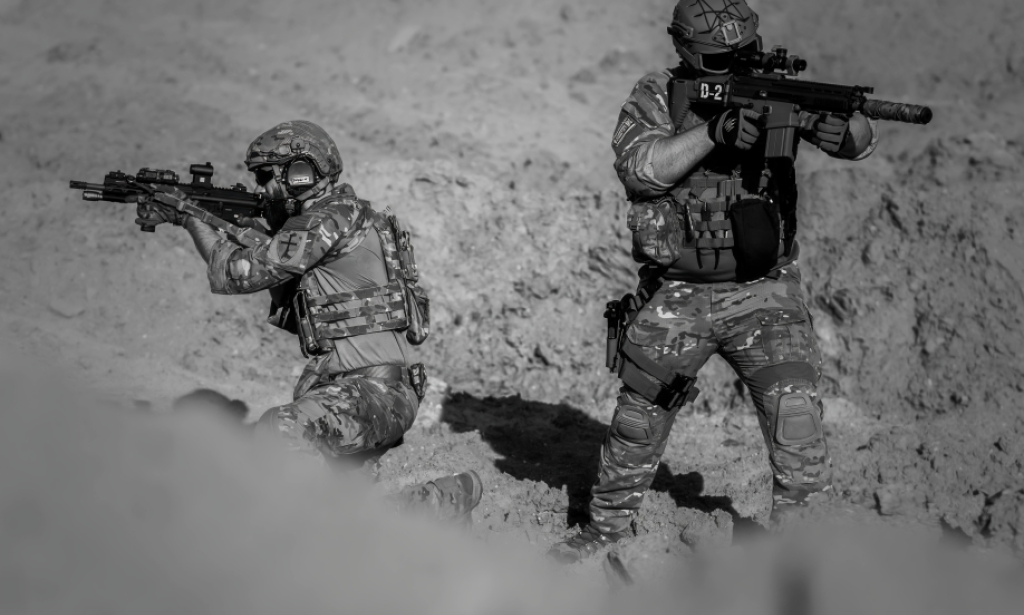Pahalgam in Jammu and Kashmir is known for its breathtaking valleys, which were disturbed once again during Pahalgam's terror attack, reminding us of the continuous threat of Pakistan's militants. The attack was directed at [ security forces, tourists, or civilians] and highlighted cross-border terrorism again in the region. The Indian security forces have released sketches of three Pakistani militants who are also believed to be the perpetrators of the attack, again resurrecting discussions on Pakistan's role in sponsoring terrorism in India.
The article will discuss the details of the Pahalgam terror attack, the identity and potential group affiliation of the militants, the historicity of the militant activity in Jammu and Kashmir, and India's counter-terrorism tactics.
Pahalgam Terror Attack: What happened?
Pahalgam is a beautiful tourist area in the Anantnag district where various tourists and pilgrims visit the Amarnath Yatra. Pahalgam as a location is also attractive for militants due to its closeness to the Line of Control (LoC), enabling easy access to infiltrate illegally into the Indian region.
Like other reports of this nature, they mention an [ambush, shooting, IED explosion, etc.]. Security forces retaliated immediately, and eventually, a gunfight lasted for several hours. Eventually, the militants escaped, but authorities later released images of three men with characteristics of Pakistani citizens who are believed to have associations with established terrorist outfits such as Lashkar-e-Taiba (LeT) or Jaish-e-Mohammed (JeM).

Who were the militants?
The images produced were of three men in their mid-twenties to early thirties who allegedly crossed over from Pakistan-occupied Kashmir (PoK) just before the raid. Intelligence sources believe the collected images represent trained militants who probably participated in earlier attacks in the Valley.
Possible affiliations.
Lashkar-e-Taiba (LeT). - Based in Pakistan, it has long been responsible for attacks inside India, including incidents such as the Mumbai attacks in 2008. LeT has been recruiting and training militants for infiltration into Jammu and Kashmir since its inception.
Jaish-e-Mohammed (JeM). - Another Pakistan-backed group involved in several significant attacks, including the 2019 Pulwama suicide attack. JeM is known for using fidayeen suicide squads.
Hizbul Mujahideen. - Primarily a local group, but supported by the role of ISI and aligned with foreign terrorists.
Pakistan’s Involvement in the Attack
Even if Pakistan has repeatedly denied sponsoring terrorism in India, it is well documented and known that Pakistan’s military establishment has engaged jihadist proxies as part of its campaign to destabilize Jammu and Kashmir. The Pahalgam attack fits a predictable pattern:

1) across the LoC: The terrorists who perpetrated the attack came from Pakistan-Occupied Kashmir or PoK, and the terrorists usually have the aid of Pakistan’s border forces in crossing over.
2) Local support networks: The overground workers (OGWs) in Kashmir support them, including shelter, transportation, supplies, and intelligence.
3) Media and propaganda: The militant groups, which reside in Jammu and Kashmir and abroad, have leveraged the Internet and social media outlets to radicalize the youth and take
claim or responsibility for acts of terrorism.
4) Historical context: Militant activity in Jammu and Kashmir is associated with Pakistan state-sponsored terrorism that dates back to at least the late 1980s, as evidenced by key periods of activity:
1989 - 2000s - a rise of insurgency under groups like Hizbul Mujahideen, which were backed by the ISI.
Post-2016: After Burhan Wani was killed, there would be unrest and a surge and recruitment of local militants in the times to follow.
Post-2019 (After Article 370 Abrogation): Pakistan began trying to push more terrorists into J&K, leading to daily and very frequent encounters.
Despite India conducting terrorism and counter-terrorism operations daily, affiliated, supported, funded, and mentored Pakistani jihadist terrorists keep the threat active.
India's Counter-Terrorism Response
The Indian security establishment has taken a multi-front response to terrorism in J&K as follows:
Increased Surveillance & Intelligence: The use of drone and satellite intelligence has permitted India to track infiltration at the speed of detection.
Surgical Strikes & Climbing the Escalation Ladder Cross-Border Operations: India's willingness to visit terror camps inside Pakistan was shown during their 2016 surgical strikes and again in the 2019 Balakot airstrike.
Increased & rolled out local police and CRPF: The expanded and rolled out Village Defence Guards (VDGs) and units like SOG enabled the capacity to face the insurgency.
Counter-Radicalization Model: India's vision of engaging youth through education and employment programs was directed at reducing militancy and local militant recruitment.
Conclusion: The Future
The Pahalgam terror incident is a stark reminder of how Pakistan-based terrorism is a formidable threat to India. While the security forces have neutralized terrorists systematically, the routine and untroubled cross-border infiltration of terrorism will require further international pressure on Pakistan to eliminate terror-related infrastructure.
India should also work on winning the hearts and minds of Kashmiri civilians and the extremist elements within the region. India's international diplomatic efforts to demonstrate Pakistan's role as a sponsor of terrorism in international forums, paired with procedural state-level military and intelligence actions, will ensure peace and stability in Jammu and Kashmir in the long term.
The world cannot turn a blind eye to state-sponsored terrorism in the case of Pakistan anymore; we must do more.


You must be logged in to post a comment.